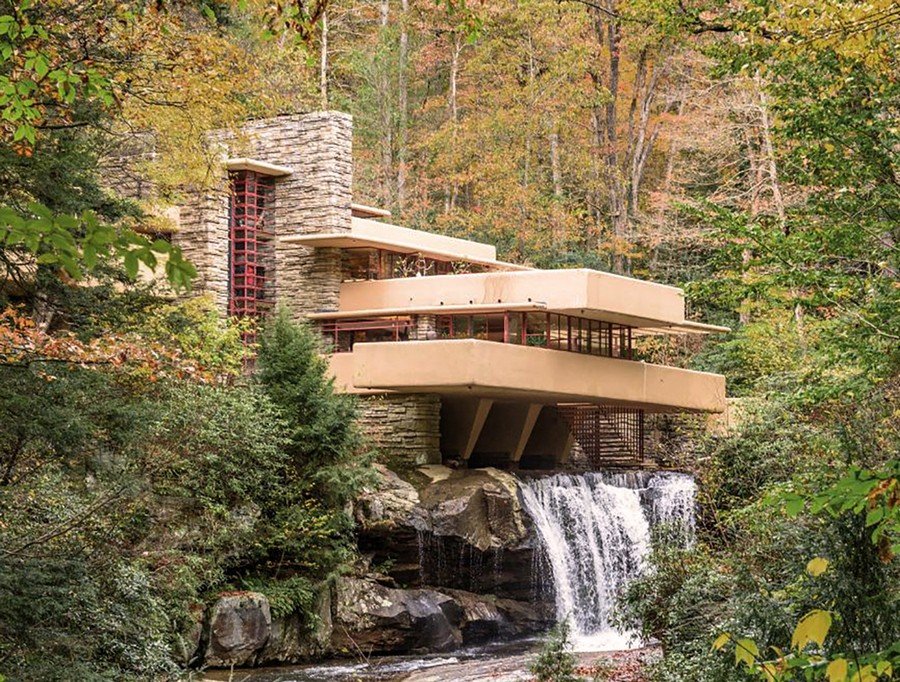#11961. Fallingwater: an organic facade in harmony with nature
Before us is the famous "Fallingwater" — a masterpiece of organic architecture created by Frank Lloyd Wright in 1935-1939. This is an outstanding example of integrating architecture into the natural landscape. The building is situated over a natural waterfall on Bear Run in Pennsylvania and is masterfully incorporated into its surroundings.
The facade demonstrates Wright's classic principles: horizontal lines and cantilevered terraces that seem to float above the waterfall, creating a levitation effect. The concrete slabs of the balconies project in different directions, resembling natural geological layers. The natural stone used for vertical elements harmoniously blends with the surrounding rocks, while the beige horizontal surfaces contrast and emphasize the connection with nature.
Special attention is drawn to the stone tower with red accents, serving not only as a structural support but also as a visual anchor for the composition. Large windows, often with red frames, create a sense of openness, blurring the boundary between interior and exterior space — a key technique in organic architecture.
This masterpiece demonstrates techniques that can be adapted for modern home building: using local materials that create a connection with the surroundings; horizontal lines that give the building calmness and stability; cantilevered projections to create facade dynamics; large windows to integrate nature into living space; and contrasting color accents to highlight architectural elements.
Fallingwater brilliantly demonstrates how architecture can avoid opposing nature, instead becoming its organic extension, entering into a dialogue with it and enhancing the natural beauty of the place.
